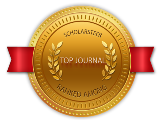Adhesion Failure Behavior of Ni-TiO2-Al2O3 & Ni-Al2O3 Composite Layers Coatings Evaluated using Microscratch Testing
Pages : 704-707
Download PDF
Abstract
It is generally accepted that Nanostructure composite layers (NCLs) find their potential applications in industry due to increased hardness, wear resistance and corrosion resistance. Titanium oxide and Alumina Oxide is one of the most important nano materials in implant coating applications mainly because of its excellent properties. This entails that a better understanding of the mechanical properties of a both coating is a must especially its behavior and the mechanisms involved when subjected to stresses which eventually lead to failure. The mechanical properties of the coating may be evaluated in terms of its adhesion strength. In this study, the coatings were subjected to series of micro scratch tests, taking careful note of its behavior as the load is applied. The adhesion behavior of the coatings showed varying responses. It was revealed that several coating process related factors such as thickness, post heat treatment and deposition parameters, to name a few, affect its scratching behavior. Scratch testing related factors (i.e. loading rate, scratch speed, scratch load, etc.) were also shown to influence the mechanisms involved in the coating adhesion failure, evaluation of the load. Displacement graph combined with optical inspection of the scratch confirmed that several modes of failure occurred during the scratching process. These include trackside cracking, tensile cracking, radial cracking, buckling, delamination and combinations of one or more modes. The various parameter are studies like controlling current, pH of the bath solution, agitation etc.; which improves the micro hardness, wear resistance and corrosion resistance of the composite coatings. Today in industry electrodeposited coatings are gaining more importance due to their low cost, ease and simplicity of operation of composite coatings for tribological applications of cutting tools. Ni is one of the most important hard coating materials and is widely used metal matrix. Generally, composites containing dioxide and nitride (like TiO2 and TiN) are preferred for high wear resistance; high micro hardness, improved corrosion resistance, and high temperature oxidation resistance as compared to pure metal electroplating. TiO2 nano-particles have good mechanical properties and can be used as secondary phase to improve the hardness of Ni coatings. In this paper Ni-TiO2-Al2O3 & Ni-Al2O3 composite coatings are employed on WC cutting tool via electro deposition. The composite layers are characterized using scanning electron microscopy (SEM), Vickers micro hardness tester and Scratch tester. The surface morphology of the coated layers shows the deposition of fine grained structures (cauli-flower like) at low currents, which increases the strain produced due to lattice defects and act as a basis for increase in hardness. The result of micro hardness and adhesion of Ni-TiO2-Al2O3 coating is observed than Ni-Al2O3 composite coating by using Vickers Hardness tester and Scratch Tester.
Keywords: Electrodeposition, Vickers micro hardness tester, scratch Tester
Article published in International Journal of Current Engineering and Technology, Vol.5, No.2 (April-2015)












 MECHPGCON, MIT College of Engineering, Pune, India
MECHPGCON, MIT College of Engineering, Pune, India AMET, MIT College of Engineering, Pune, India
AMET, MIT College of Engineering, Pune, India International Conference on Advances in Mechanical Sciences
International Conference on Advances in Mechanical Sciences  International Symposium on Engineering and Technology
International Symposium on Engineering and Technology International Conference on Women in Science and Engineering
International Conference on Women in Science and Engineering




